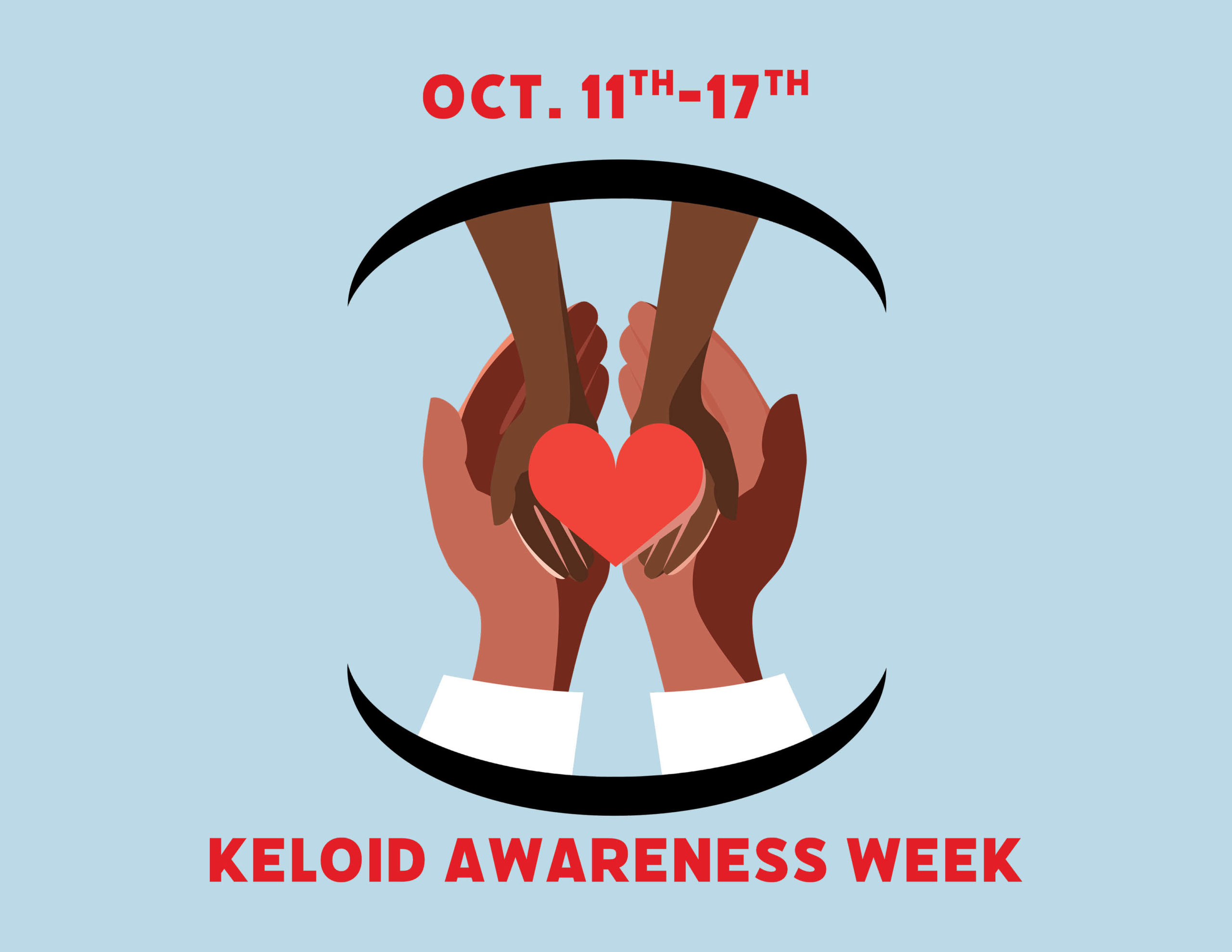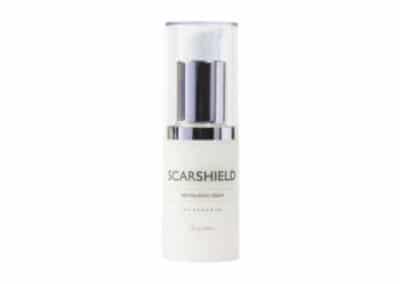This week was started by our founder and CEO, Dr. Michael E. Jones. As a world renowned Keloid surgeon, he works tirelessly to educate the population on Keloids, how they form and why, inspires those in need, remove for those who want removal and celebrate those with scars who wish to keep them. So wherever you fall in the spectrum of whether you want to learn about Keloids, if you have one and need it removed or simply wish to celebrate your scars, this week is for you.
Education
A keloid is a raised, often shiny, scar that grows from an injury, puncture, or trauma to the skin. Those of African, Latino, or Asian descent, who share a blood relative with keloids, are likely to have this growth occur from a cut, burn, ingrown hair, severe acne, ear piercing, a tattoo, surgery, even a chicken pox scar. Keloids can develop anywhere and are found most often on the ears, neck, chest, back and shoulders of both men and women.
Keloids can appear spontaneously or months after a skin scar. They rarely go away on their own. Some continue to grow and become a visible source of extreme pain, irritation, oozing and bleeding. These cases can lead to mental anguish, embarrassment, isolation, severe depression, and thoughts of suicide. Generally, they go unnoticed, covered by hair or clothing, but some grow to disfigure, inflict pain, and disrupt life.
Some keloids are celebrated by their owners. They find the scaring and growth gives them an added uniqueness.
Keloids are usually non-cancerous growths that are diagnosed over 200,000 times annually in the USA. International numbers are not collected. We do know they are genetic, so if you have a family member who gets a keloid, you too, may respond with an overly aggressive healing response to a skin trauma, that could continue into a significantly disabling growth. If removed improperly, a keloid can return and grow even larger.
Keloid removal is not covered by most health care insurance in America. It is considered “Cosmetic,” therefore considered ‘elective’ or chosen. When a keloid starts from something as simple as an ingrown hair in the beard or hairline, or an ear piercing, and takes over the movement of the head and neck, it is not a chosen surgery. It is a necessity for – mental and physical health – and is a medical condition.
It is essential to get proper keloid removal to ensure that the keloid does not recur.
What is a Keloid?
What are the risk factors?

Keloid Removal at Lexington Plastic Surgeons

Dr. Michael E. Jones, founder of Lexington Plastic Surgeons has seen over 15,000 keloid cases in his 20 plus years. Dr. Jones is also known as Dr. Keloid, because of his success rate for removal with non-return. His average is 90% non-return versus the normal 40%.
Dr. Jones’ success rate is based on his years of experience, technical skills, and multifaceted procedure.
Depending on the size and location of the keloid, personalized removal may include Sensus Healthcare Superficial Radiation Therapy (SRT-100) which emotes a low-energy radiation dose directly on the keloid. The Candela VBeam Pulsed Dye Laser uses heated wavelengths to cause blood vessels to collapse which cuts off the food source to the growth. This device is completely safe as you may have experienced its success with a wrinkle, scar, stretch mark or Rosacea treatment. Dissolvable sutures help avoid any additional trauma to the skin. Platelet Rich Plasma Surgical Excisions takes the individual’s blood. After processing, it is reintroduced for wound healing with all the essential bioactive proteins easily absorbed back into the blood stream. Surgical removal of the keloid. Based on the size and location(s), this may have to be done in stages as some grow into the face around essential nerves. Then post-operative recovery dressings, procedures, and creams.

Insurance Coverage
As with any surgery, Lexington Plastic Surgeons suggests you speak with your health insurance provider to learn their coverage and procedure. Most plastic surgery is considered elective, where the patient is asking for a fix, or to adjust something on their body. In the situation where keloid growth inhibits the body’s natural movement stature, inflicts pain, uncontrollable itching, bleeding, and oozing, the removal should be covered by insurance. Lexington Plastic Surgeons spends time fighting this daily.
Ways to get financed
- Alphaeon Credit
- Care Credit
- Patient Fi
- United Medical Credit
While performing keloid removal on people without insurance coverage, Dr. Jones endowed Operation Keloid – the philanthropic arm of Lexington Plastic Surgeons. His desire to make a “Keloid-Free Journey” possible for everyone. OK uses fund from this 501c3 foundation to:
- Obtain a personal consultation with an Operation Keloid trained keloid removal doctor
- Travel and accommodations to a licensed removal surgery
- Life-changing keloid removal surgery
Before and After Care

Procedure costs including physician provider, hospital, anesthesiologist, and other specialists who participate in removal and care
Family support, travel, and hospitality – providing financial help to keep the family support system together during the procedures
Operation Keloid understands the impact that a keloid growth can have on the entire family. OK also recognizes the healing power of love and compassion from your home support team. They make the effort to keep the team together.
Health Insurance
LPS and Dr. Michael Jones are working tirelessly to help get Keloids covered by all major providers. Believe it or not, there is medical discrimination that occurs, especially within the Keloid community. Most providers do not wish to recognize Keloids as a debilitating medical concern that justifies coverage. If you know of anyone that suffers from keloids and wishes to have them removed, more times than not they’ are suffering in silence. We hope that you will join us in our plight to get coverage for all. In the meantime, you can donate to our passion project, which was born out of love, Operation Keloid. Operation Keloid funds these operations because they are mostly NOT covered by medical health insurance. If any, or all parts are covered by insurance, Operation Keloid will step in to cover the non-insured pieces.
Educational Work
Operation Keloid also funds Dr. Jones’ educational programs that share his successful techniques with doctors in Europe, China, Africa, Cuba, and Puerto Rico. Operation Keloid has helped build a hospital in Tanzania, Africa, and performed extreme keloid surgeries there while training their local doctors in the new techniques for removal and care.
Donate now:
Your donation to Operation Keloid will fund the full operation, parts, travel, hospitality, and long-term stays.
Your contribution may educate, as Operation Keloid globally shares information on the new techniques and devices that can ensure the removed keloid will not recur.
Please help a friend, or a stranger, live a keloid-free journey by donating to Operation Keloid – a 501c3 foundation which allows donors to take a tax deduction for contributions of goods, cash, and other assets.



